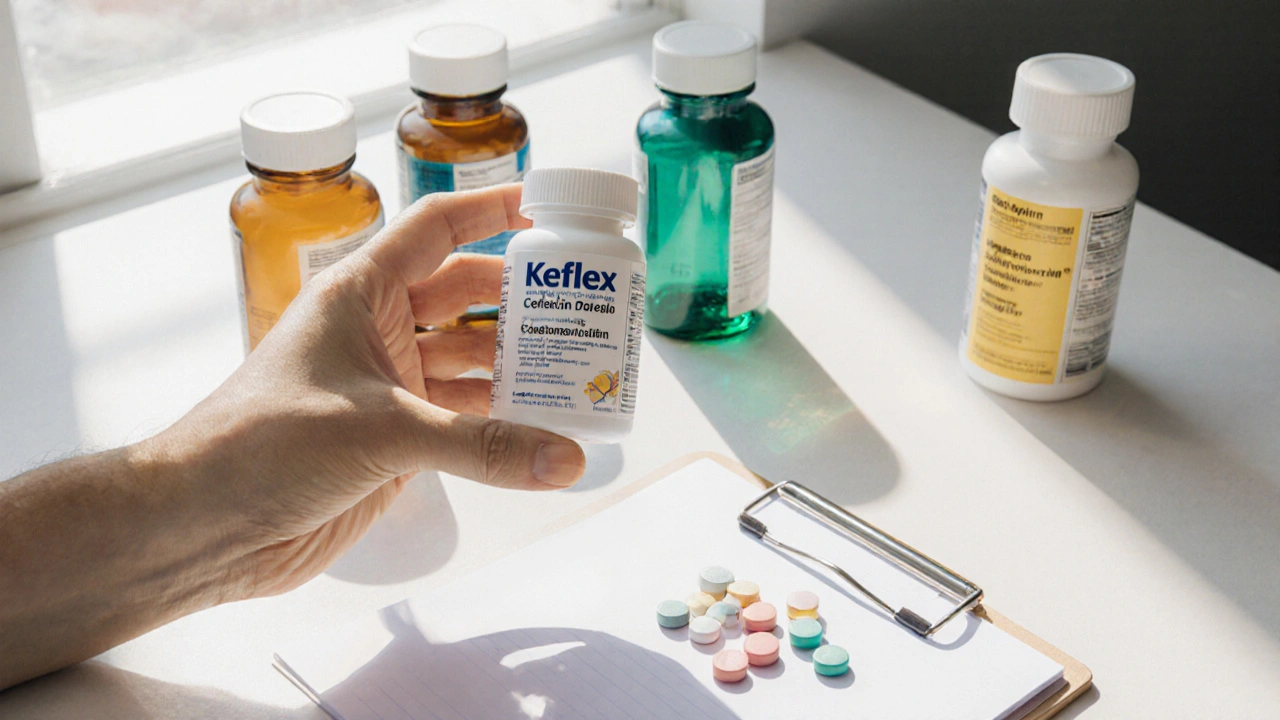Cephalexin: What It Is and Why It Matters
When working with Cephalexin, a first‑generation cephalosporin antibiotic used to treat a variety of bacterial infections. Also known as Keflex, it works by disrupting bacterial cell wall synthesis, which stops the microbes from growing and multiplying. This makes Cephalexin a go‑to option for skin, bone, and urinary tract infections that are caused by susceptible bacteria.
How Cephalexin Connects to Common Health Issues
Cephalexin is often prescribed for bacterial infection, any condition where harmful bacteria invade body tissues and trigger symptoms like swelling, pain, and fever. It targets gram‑positive organisms such as Staphylococcus aureus and Streptococcus pyogenes, and some gram‑negative strains like Escherichia coli. When a patient takes Cephalexin correctly, the infection clears faster, reducing the risk of complications. However, misuse can lead to antibiotic resistance, the ability of bacteria to survive despite the presence of drugs designed to kill them. Resistance grows when people skip doses, finish a prescription early, or use the drug for viral illnesses. In short, Cephalexin requires strict adherence to dosing schedules to stay effective and keep resistance rates low.
Beyond the core drug, you’ll encounter related forms and classes that shape how Cephalexin is used. The medication comes in tablets, capsules, and an oral suspension – each suited to different age groups and needs. For children who can’t swallow pills, the suspension provides a measured dose that's easy to take. The dosage depends on the infection type, patient weight, and kidney function; typical adult regimens range from 250 mg to 1 g taken every six to twelve hours. Cephalexin belongs to the broader cephalosporin, a class of beta‑lactam antibiotics related to penicillins but with a slightly different chemical structure. This class shares the potential for allergic reactions, especially in people with penicillin allergies, so always flag any known sensitivities to your pharmacist. Speaking of safety, buying Cephalexin from reputable online or brick‑and‑mortar pharmacies ensures you receive a genuine product and the correct dosage instructions. Checking for a valid prescription, verifying the pharmacy’s licensing, and comparing prices can help you avoid counterfeit drugs and save money.
Now that you understand what Cephalexin does, how it fits into treating bacterial infections, and why proper use matters, you’re ready to explore the detailed articles below. From managing side effects to comparing dosage forms, the collection offers practical advice you can apply right away.

